DU Special Report: The Pintail Puzzle
Waterfowl managers are striving to conserve northern pintail populations and their habitats while also providing hunting opportunities for these iconic birds
Waterfowl managers are striving to conserve northern pintail populations and their habitats while also providing hunting opportunities for these iconic birds
By Mike Brasher, PhD, Jim Devries, PhD, Tom Moorman, PhD, and Mark Petrie, PhD
Struggling with each step, the aged hunter slowly makes his way through the last few yards of shallow water and boot-sucking mud to solid ground. Draped across his shoulder is a leather game strap inherited from his father, connecting him to countless sunrises and bountiful hunts of an earlier era. The strap carries 10 perfectly adorned drake northern pintails taken in the coastal marsh on this crisp morning. As the hunter breaks into the clearing where he parked his old pickup, he sees the familiar sight of a game warden, likely the same one he has encountered before. His pace continues unbroken, and he issues a cordial greeting as he approaches, the mornings bag resting heavy across his shoulder.
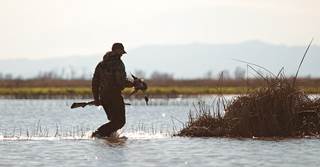
Photo SHARP-EYEIMAGES.COM
After a quick check of the hunters license, stamp, shotgun, and the birds on his game strap, the warden offers him a friendly handshake, congratulates him on a successful hunt, and wishes him good luck on future hunts in the adjacent family-owned marsh. The year was 1979, and the location was somewhere along the Texas coast. The point system was in effect, and drake pintails were dime ducks, each counting 10 points toward a maximum federal allowance of 100 per day. Just a few months earlier, the US Fish and Wildlife Service (USFWS) had reported a healthy 5.4 million pintails in the breeding population. For pintails and pintail hunters, those were good days indeed.
Pintail populations have declined markedly since then, and harvest regulations have been tightly restricted on the species. The most recent North American Waterfowl Management
Plan (NAWMP) update highlights the inseparable connections among waterfowl populations, their habitats, and the people who appreciate the birds and support their conservation. The story of the pintail is a useful example of the close relationship among these three elements and illustrates why each leg of the stool must be considered when managing populations of pintails and other waterfowl.
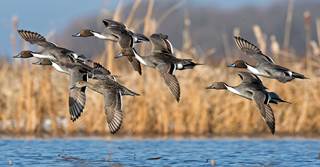
Photo Fred Greenslade
Most readers of this magazine are likely aware that the pintail has been a species of concern among hunters and waterfowl managers for many years. Breeding ground surveys revealed sharp declines in pintail numbers during the late 1970s and early 80s. While all duck species declined during the prairie drought of the 1980s and early 90s, most rebounded when water returned to the pothole country in the mid 90s. The pintail has been a notable exception. Its breeding population hovered around 6 million birds during the early 1970s, but most recent estimates have remained below 3.5 million. In 2019, the population stood at only 2.3 million birds43 percent below the NAWMP objective of 4 million.
The pintail population has been relatively stable or even shown a slight increase over the past 35 years, but it has failed to recover as well as populations of many other species of ducks. What has prevented the pintails recovery? Certainly, wetland drainage and loss of native grassland have continued across the Prairie Pothole Region (PPR), where the majority of pintails nest during wet years. These habitat losses reduce the capacity of the region to attract and produce new ducks. However, the scale of landscape change on the prairies does not explain the pintail population decline. If that were the case, other prairie ducks would not have recovered in response to improved wetland conditions and habitat restoration efforts following the drought.
A key explanation for the different response by pintails is the species unique tendency to nest in sparsely vegetated short-grass prairie and residual crop stubble, coupled with a dramatic change in agricultural practices in Prairie Canada beginning in the 1970s. While the initial decline in pintail numbers was undoubtedly due to the 80s drought, a large-scale switch in Prairie Canada from a farming practice known as summer fallow to continuous cropping has reduced pintail nesting success in the core of the species breeding range. While 30 to 40 percent of the cropland was left fallow (unseeded) each year during the 1970s, concerns over soil erosion and development of new crop varieties resulted in a mass movement to continuous cropping in the 1980s. Previously, fallow cropland, which structurally resembles native short-grass prairie, was left undisturbed until mid- to late summer, giving pintails plenty of time to nest and hatch broods before fields were tilled for weed control. As a result of the shift away from summer fallow to continuous cropping, 25 million acres of once relatively safe pintail nesting cover are now seeded every year, resulting in significant losses of pintail nests during spring planting operations. Compounding the problem, early nestswhich are often the most productiveare especially susceptible to disturbance because they are often initiated before seeding begins.
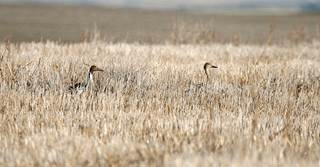
Photo MICHAELFURTMAN.COM
DU researchers have estimated that nearly half of the pintail nests in Prairie Canada are initiated in cropland. However, approximately 95 percent of those nests are unsuccessful due to the combined effects of predation and unintended mechanical disturbance. Additionally, pintail reproductive success, as measured by the annual ratio of young to adults captured during fall banding operations, has declined in step with the loss of summer fallow and the rapid adoption of continuous cropping during the 1980s.
Given the propensity of pintails to nest in cropland, finding solutions that are beneficial both to agriculture and to waterfowl is essential to restoring the birds populations to healthy levels. Fall-seeded crops such as winter wheat and fall rye hold great promise as a waterfowl-friendly alternative to spring-seeded crops. Fall-seeded crops are left undisturbed throughout the spring nesting period, giving pintails and other ducks a much better chance of nesting successfully. Other programs that can help improve pintail breeding success include the conversion of cropland back to grassland for cattle grazing and the retention of existing grasslands in areas where their risk of loss is high. These actions will continue to be the focus of DUs efforts to benefit pintails, and DU will continue its cooperative work with farmers in both the US and Canadian portions of the PPR in the years ahead.
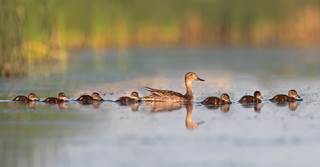
Photo GARYKRAMER.NET
Regulated harvest has been a cornerstone of waterfowl management in North America since passage of the Migratory Bird Treaty Act in 1918. Although final jurisdiction rests with US and Canadian federal agencies, the process for setting regulations involves a tightly woven collaboration of states and provinces via the four Flyway Councils. Hunters well versed in harvest regulations know that higher waterfowl populations typically enable more liberal regulations, while lower populations lead to tighter restrictions. Waterfowl managers are careful to point out, however, that harvest restrictions are not intended to bring about the recovery of depressed populations. Rather, changes in regulations are implemented to align with a populations current capacity to sustain harvest without imperiling the species.
Waterfowl managers have implemented more restrictive harvest regulations for pintails in response to declines in the population. During the 1970s and early 1980s, bag limits were as liberal as seven pintails in the Pacific Flyway, 10 in the Central and Mississippi Flyways, and four in the Atlantic Flyway. Higher limits in the Central and Mississippi Flyways occurred under the point system, in which hen pintails were worth 20 points and drakes were worth 10 points. (The point system was suspended in 1988 and subsequently eliminated altogether in 1994, which was the last time sex-specific bag limits were offered for pintails.) As the pintail population declined during the late 1980s and early 90s, bag limits were restricted to only one bird per day across the United States. Harvest regulations became even more restrictive in the early 2000s with the implementation of a season within a season, in which pintails could only be harvested during a portion of the general waterfowl season.
It wasnt until 2010 that a formal adaptive harvest management (AHM) framework for pintails was implemented. Unlike mallards, which are managed in three separate populations (western, midcontinent, and eastern), pintails are managed as a single population, because birds from different breeding areas intermix on the wintering grounds. Thus, pintail harvest strategies must balance the interests of stakeholders across all four flyways. During development of the pintail AHM framework, alternative strategies were evaluated in an effort to achieve the following objectives: (1) conserve pintail populations indefinitely, (2) provide harvest opportunity, (3) minimize regulatory burden on the public, (4) encourage hunter participation, and (5) provide for other nonconsumptive uses.
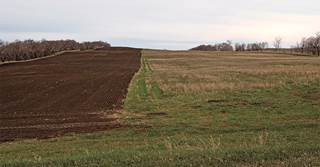
Photo MICHAELFURTMAN.COM
A key metric used to compare alternative strategies was the frequency with which each strategy was predicted to result in closed, restrictive, moderate, and liberal seasons based on AHM models of pintail population dynamics and harvest impacts. Strategies that offered more liberal seasons and bag limits predicted a higher frequency of closed or restrictive seasons, which was viewed as an undesirable trade-off. Preference was ultimately shown for a harvest strategy that reduced the predicted frequency of closed or restrictive seasons but also excluded the most liberal (three-bird) bag-limit alternatives.
Under the current framework, an open season for pintails occurs in years when the breeding population exceeds 1.75 million birds. The daily bag limit ranges from one to two birds per day, depending on the size and mean latitude of the breeding population. Two birds are typically allowed in years when there is a relatively large pintail population and a high proportion of those birds are surveyed in the PPR, where nesting birds are believed to be more productive than they are on breeding areas that are farther north. As noted earlier, a three-bird daily bag limit is not currently available in accordance with the regulatory strategy agreed upon in 2010.
Many waterfowl hunters are unhappy with limited harvest opportunities for pintails under the current framework, noting that restrictive regulations for this popular species have greatly diminished the quality of their hunting experiences. Some say that a bag limit of only one pintail per day is an insufficient return on their investment in waterfowl hunting, including expenditures for habitat conservation and management. These sentiments have raised questions among waterfowl managers about the complex interplay among harvest regulations, hunter participation and satisfaction, and hunter-driven habitat management.
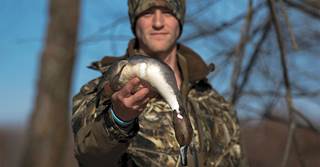
Photo Edward Wall
Concerns about pintail harvest regulations are most prevalent among hunters in those migration and wintering areas where the birds continue to be found in relatively large numbers, such as in Californias Central Valley, along the Gulf Coast, and in the Mississippi Alluvial Valley. Wintering pintails in those regions rely heavily on private lands managed for waterfowl hunting, either on duck clubs or leased agricultural lands. For example, two-thirds of the remaining wetlands in the Central Valley are owned by duck clubs, and 85 percent of all the food resources available to pintails are found on duck club lands and rice fields that are flooded after harvest. These privately owned habitats are also very important to hunters, with more than 60 percent of the states waterfowlers relying on duck clubs or leased rice fields for hunting opportunities.
During the 1970s, pintails made up nearly 40 percent of Californias dabbling duck harvest. Today, they account for only 15 percent, largely due to stricter harvest regulations. The number of California waterfowl hunters has also declined, from nearly 180,000 in 1971 to just over 60,000 today. Duck clubs and their extensive base of managed habitat require duck hunters (i.e., club members), and it is unlikely that these privately managed wetlands will be maintained if clubs are unable to recruit new members in the future.
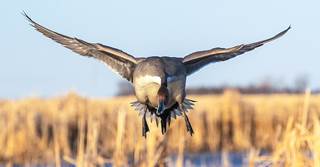
Photo DOUGSTEINKE.COM
Waterfowl managers are similarly concerned about the relationship between hunter numbers and winter-flooded rice. Income derived from hunting leases helps offset water-delivery costs for flooding rice fields after harvest, and many rice producers would likely abandon this practice without lease payments. Public-land hunters also make crucial investments in waterfowl habitat conservation. License sales, duck stamp purchases, and annual or daily permit fees paid by these hunters are essential to maintaining the quality of public lands in the region, some of which support the highest densities of wintering waterfowl in the United States.
Clearly, the future of waterfowl habitat conservation in the Central Valley is overwhelmingly dependent on investments from hunters, perhaps more so than anywhere else in the nation. Would increasing harvest opportunities for pintails, when biologically permissible, help stabilize or grow hunter numbers and thus maintain or increase investments in waterfowl habitat conservation and management to the greater benefit of pintails? While this question remains to be answered, its relevant to the broader discussion about the close connections among waterfowl populations, hunters, and support for habitat conservation.

Photo Gary R. Zahm
The integration of science-based information from all three pillars of our waterfowl management systemducks, habitat, and peopleis essential to meeting the NAWMPs objectives. In pursuit of this goal, the USFWS, the Flyway Councils, and other scientists are currently reexamining the AHM strategy for pintails. These efforts will build upon knowledge gained in recent years, including a growing recognition of the close relationships among harvest management, hunters, and habitat. The full suite of regulatory alternatives to be examined and selected, potentially including expanded bag limits and experimental seasons, has yet to be determined. Nevertheless, DU commends our federal and state partners for their efforts and welcomes opportunities to share information about this process with hunters and other stakeholders.
Our understanding of the interrelated effects of harvest and habitat management will ultimately benefit from careful experimentation and subsequent collection of data. DU supports an active approach to adaptive harvest management with the goals of sustaining pintail populations, ensuring adequate habitat, and recruiting and retaining waterfowlersthe foundation on which waterfowl management and our hunting culture rests.
The next time you witness the graceful flight of a flock of pintails, ideally as they approach your decoys, rest assured that waterfowl management professionals are fully committed to sustaining the population, providing necessary habitat, and also increasing the number of hunters and supporters of waterfowl conservation. Know that DU is also committed to collaborating with our conservation partners to ensure that future generations can witness pintails in flight. Both the birds and their supporters deserve nothing less.
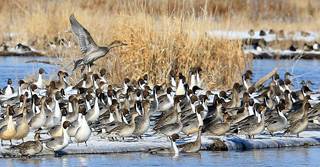
Photo DOUGSTEINKE.COM
Dr. Mike Brasher is waterfowl scientist at DU national headquarters. Dr. Jim Devries is a research scientist with DU Canadas Institute for Wetland and Waterfowl Research. Dr. Tom Moorman recently retired from his position as DUs chief scientist. And Dr. Mark Petrie is director of conservation planning in DUs Western Region.
Ducks Unlimited uses cookies to enhance your browsing experience, optimize site functionality, analyze traffic, and deliver personalized advertising through third parties. By continuing to use this site, you agree to our use of cookies. View Privacy Policy